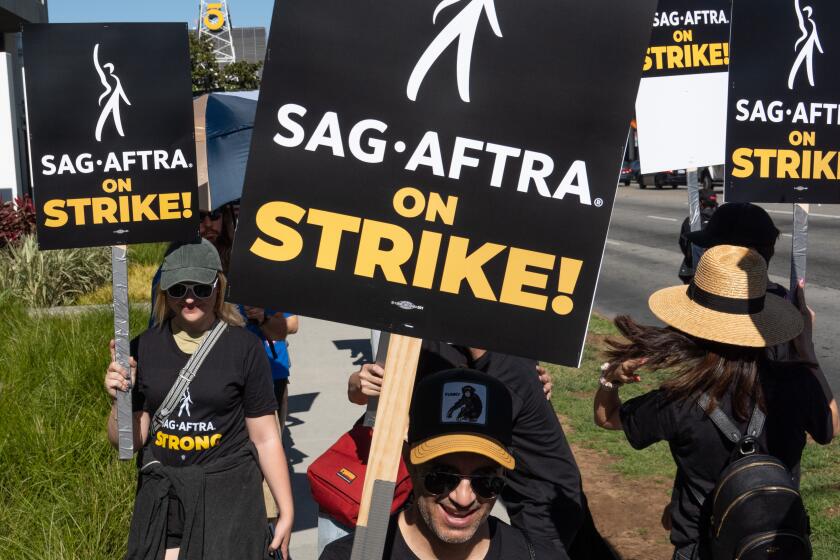FDA aims to shed light on sunscreen
Under pressure from Congress, government regulators Thursday proposed new “truth in labeling” rules for sunscreen to give consumers clearer, more complete information on protection against cancer-causing ultraviolet rays.
Once finalized, the rules would require manufacturers to test products for protection against two types of ultraviolet rays instead of one, as is now standard. Sunscreen lotions would carry a warning that alone they offered no guarantee against the sun’s rays, and that consumers should also stay out of the midday sun and consider wearing hats and long sleeves.
Taken together, the new requirements would help consumers “make informed decisions about protecting themselves against the harmful effects of the sun,” said Food and Drug Administration Commissioner Dr. Andrew C. von Eschenbach, who was treated for melanoma, a serious form of skin cancer, in 1987.
“This will bring things more up to date,” said Dr. Sheldon R. Pinnell, a dermatology professor at Duke University Medical Center. “The worry is that people have a false sense of security.”
Critics, though calling the agency’s move a positive step, expressed concern about when the requirements might be finalized.
“FDA first pledged to implement federal safety sunscreen regulations over 28 years ago, and to date nothing has been finalized,” said Jane Houlihan, vice president for research at the Environmental Working Group.
An industry group said it supported the goals of the FDA proposal, but it stopped short of endorsing the specific testing requirements.
Many sunscreen manufacturers already warn consumers to limit their exposure to the sun.
Congress had directed the FDA to finish the sunscreen rules by May 2006, but regulators missed that deadline. Exasperated lawmakers mounted a letter-writing campaign this year to get the agency moving.
About 1 million people in the U.S. are diagnosed with skin cancer every year, a number that has risen with the shift in population to Sunbelt states. Fair-skinned people are at higher risk.
Sunscreen is a $450-million-a-year industry, but critics say the consumer labeling has a big loophole: A sunscreen’s SPF rating (for sun protection factor) measures its protection against only one kind of ultraviolet radiation, UVB.
Under the proposed system, sunscreens would be rated on how well they protect against two types of ultraviolet light, UVA and UVB. Higher-wavelength UVA light causes the skin to tan, whereas lower-wavelength UVB causes sunburn.
Both UVA and UVB can damage the skin and cause skin cancer, but UVA rays penetrate deeper into the skin. Scientists once believed that UVB rays were primarily responsible for cancer-causing damage, but they now recognize UVA light as equally worrisome.
“People think that because the SPF number is very high, they are getting very good protection, but that doesn’t say anything about UVA,” Pinnell said.
Most skin cancer lesions are superficial and can be easily removed in a doctor’s office. But the most serious form of skin cancer, melanoma, develops in the pigment-producing cells and requires extensive treatment to avoid life-threatening consequences.
Under the FDA proposal, manufacturers would test sunscreen for UVA protection twice, once in the laboratory and another time using human volunteers, to see how much the product reduced darkening of the skin. Based on the results, the lotion would get a protection rating of one to four stars.
If a product received a lower score on one test, the lower score would determine the rating. Some tanning lotions offer no UVA protection, and they would have to be labeled as such.
The proposal would also make changes to the SPF ratings for sunburn protection, recognizing that some products can offer up to 50 times the skin’s natural resistance. And the FDA would allow manufacturers to use new combinations of active ingredients.
But the agency acknowledged there was no scientific evidence that using sunscreen prevented skin cancer -- hence the need to limit exposure to the sun.
“Studies have not specifically linked the use of sunscreen by itself to reduced risk of skin cancer or skin aging,” said an FDA statement. “To the contrary, studies have shown that some consumers increase time in the sun by wearing sunscreens, thereby increasing UV exposure.”
The agency also disputed claims that some sunscreens were waterproof and sweat-proof. “FDA does not believe that these are accurate statements,” the agency said.
FDA officials said it had taken so long to issue a proposal for UVA testing because there were no agreed-on international or industry standards. The agency’s proposal will now be open to public comment for 90 days.
Officials said they could not predict when the final rules would be issued.
“We will work as expeditiously as possible,” said Douglas Throckmorton, deputy director of the FDA’s Center for Drug Evaluation and Research.
--
ricardo.alonso-zaldivar@latimes.com






